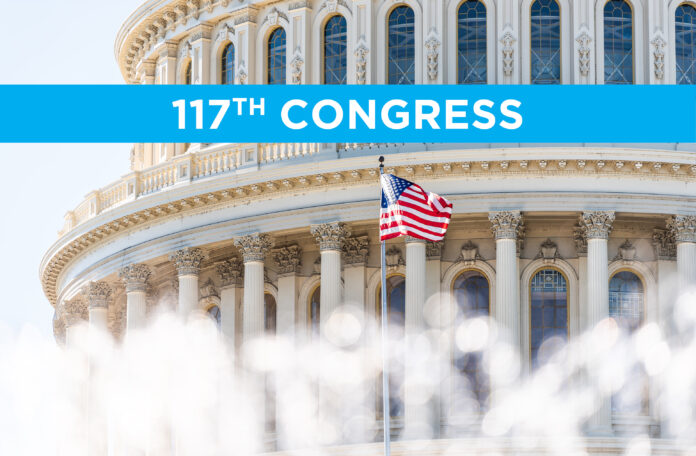
Following surprise victories in two Senate special elections in Georgia on January 5, Democrats are set to control both the House and the Senate for the next two years starting January 20. However, that control is delicate: Democrats and Republicans each control 50 of the Senate’s 100 seats, while Senator-turned Vice President Kamala Harris will hold the tiebreaking vote. In the House, Democrats have a 222-211 majority, the smallest in decades. This narrow control offers both rare opportunities and unique obstacles to Democrats hoping to deliver victories ahead of another brutal election cycle. Below, Michael Best Strategies Principal Lucia Alonzo discusses how the new reality will shape the 117th Congress:
Power for Democrats in budget reconciliation, Congressional Review Act, nominations: By winning a majority in both chambers, no matter how small, Democrats retain key unilateral powers to enact their agenda without Republican support.
- Democrats in both chambers can use an obscure-but-potent maneuver called budget reconciliation to enact major priorities on party-line votes. Reconciliation can deal with federal spending, taxation, or the debt ceiling, offering a vast array of policy options for Democrats that could include (but not limited to) increasing COVID aid funding, enacting tax reform, student loan forgiveness, enacting paid family leave, expanding childcare options, and more. However, there are limits to this power: Democrats must follow complex rules to craft a reconciliation proposal through the House and Senate Budget Committees, and they can only attempt reconciliation once per fiscal year.
- Democrats can act on their own under the Congressional Review Act to overturn select regulations issued in the last days of the Trump Administration with a party-line vote. Congress can use the CRA to overturn rules finalized since late summer on matters like environmental and financial deregulation. Again, however, there are trade-offs: using the CRA to withdraw a Trump-era rule also bars the Biden team from issuing a similar rule later.
- The Senate’s 60-vote threshold for major legislation does not apply to most presidential nominations, allowing the Senate to quickly confirm top members of the new Biden Administration as well as Biden-nominated judges even without GOP votes.
50-50 Senate: An 50-50 split ensures that the Senate will keep requiring bipartisan collaboration to operate, but also raises questions on how day-to-day business will flow. The Democratic majority faces a stark choice: to adopt a more equitable power-sharing agreement in the name of bipartisanship, or give themselves more power in hopes of enacting major legislation in a short time frame.
Committees: Democrats will chair Senate committees, but bipartisan leaders have not yet agreed on how to divide power in running them. During the last 50-50 Senate split in 2001, the parties evenly divided committee slots and budgets, plus allowed committee leaders from either side to advance legislation to the floor if the committee deadlocked. However, Democrats this year could instead give themselves an extra committee seat and funding over Republicans. This move would solidify more power for Democrats, but also damage bipartisan relations.
Debating amendments: Senate Democrats could offer both sides more chances to debate and amend legislation on the Senate floor, or retain the firm hand employed under current Majority Leader Mitch McConnell (R-KY). Senators complain McConnell stifles floor debate by immediately filling all slots for floor amendments with his own proposals, preventing both the minority and fellow Republicans from proposing their own changes. Senate Democrats expect their Leader Chuck Schumer (D-NY) to take a more collaborative approach and leave slots open for his members’ proposed amendments. Similarly, under precedent from 2001, McConnell and Schumer may agree to avoid using this tactic to block the other party’s amendments. However, under a much more polarized political environment, it is unclear if the Democrats would surrender McConnell-style control.
60-vote limit softens Democratic policy: Per typical Senate procedure the minority can “filibuster” major legislation, which the majority can overrule with a 60-vote majority. Without a filibuster-proof majority, Democrats must tweak their policies to win over a big chunk of Senate Republicans on important bills. A natural result: major policy bill passing the Senate will probably be cheaper and more conservative compared to House Democrats’ and the Biden Administration’s progressive ambitions.
Breakaways on the wings: Razor-thin majorities in both chambers means more power for members on the ideological wings—both moderate and progressive—to extract concessions from leadership on major legislation.
In the Senate, just one member can block major legislation, raising the stakes for leaders. Most have already pegged conservative-leaning Democrats like Sen. Joe Manchin (D-WV), Sen. Kyrsten Sinema (D-AZ), and Sen. Angus King (I-ME) as potential breakaways. However, Senators facing tough midterm races in 2022, such as Sen.-elect Mark Kelly (D-AZ), Sen.-elect Raphael Warnock (D-GA), Sen. Catherine Cortez Masto (D-NV), and Sen. Maggie Hassan (D-NH), could also buck leadership in appealing to voters back home. Senate Democrats will likely try to head off any dissent by focusing on these members’ needs, offering them prime committee slots, and advancing their legislation. By the same turn, however, moderate Republicans like Sen. Susan Collins (R-ME, just-reelected by a wide margin), Sen. Lisa Murkowski (R-AK), and Sen. Mitt Romney (R-UT) have histories of breaking with GOP leadership, which could strengthen Democrats’ hand on key votes.
In the House, a slim majority presents new challenges for Democratic leaders accustomed to a larger margin of error. As in the Senate, members most likely to break with leadership are in “purple” districts facing harsh midterm odds. Leaders may moderate policies and rhetoric to protect those members, but that could create another problem inflaming the chamber’s outspoken progressive wing. House Democrats have pre-emptively defanged common House procedures where members may defect, such as the motion to recommit (MTR) allowing the minority to force Democrats into votes on controversial issues. Democratic leaders also enacted an early demand from progressives, eliminating requirements that big spending on climate, health, and economic aid be offset with cuts elsewhere in the federal budget – this change will likely speed passage of larger progressive-leaning bills on this subject in the House.2022 starts now: Democrats are already bracing for a rough 2022 midterm election. Midterms consistently rebuke the party controlling the White House, and narrow Democratic majorities in both the House and Senate raise the stakes for both parties. Over the next six to 12 months, the congressional GOP and Democrats have their best chances of bipartisan action. However, as 2022 begins and the elections grow closes, expect partisan gridlock to shut down all but the most urgent legislating.





